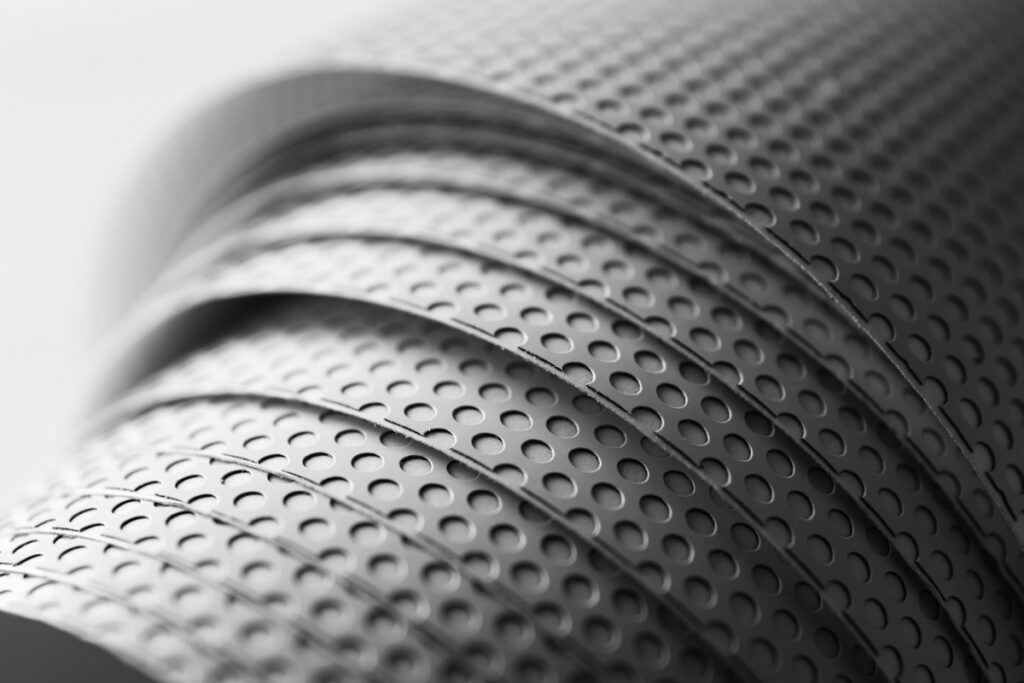The integration of smart materials in architecture represents a revolutionary shift towards sustainable, resilient, and technologically advanced built environments. With the global construction sector accounting for approximately 39% of energy-related carbon dioxide emissions and 36% of final energy consumption, the imperative to adopt innovative solutions that reduce energy consumption, enhance occupant comfort, and mitigate environmental impact has never been more pressing. Smart materials in architecture offer a promising pathway towards achieving these goals by leveraging cutting-edge technologies to transform the way buildings are designed, constructed, and operated.
According to market research, the global smart materials market size is projected to reach USD 117.2 billion by 2026, growing at a compound annual growth rate (CAGR) of 13.5% from 2021 to 2026. This rapid growth is fueled by increasing awareness of the benefits of smart materials, such as improved energy efficiency, enhanced functionality, and reduced maintenance costs. Architects, engineers, and developers are increasingly incorporating smart materials into their projects to meet stringent sustainability standards, comply with regulatory requirements, and address the evolving needs of occupants and communities.
In this context, this article explores the transformative potential of top smart materials in architecture, ranging from shape memory alloys and self-healing concrete to electrochromic glass, photovoltaic panels, aerogel insulation, and piezoelectric materials. By delving into the composition, properties, applications, advantages, and challenges of each material, we aim to provide architects, designers, and stakeholders with valuable insights and inspiration for incorporating smart materials into their projects. Through collaboration, innovation, and strategic investment, the architecture industry can harness the power of smart materials to create sustainable, resilient, and human-centric built environments that thrive in the face of global challenges.
Table of Contents
What Change Can Smart Materials in Architecture Make?
Smart materials in architecture have the potential to bring about significant changes and advancements in several key areas:
1. Sustainability: Smart materials can contribute to more sustainable architectural practices by improving energy efficiency, reducing waste, and minimizing environmental impact. For example, photovoltaic panels and aerogel insulation help harness renewable energy and enhance building insulation, respectively, leading to reduced energy consumption and lower carbon emissions.
Suggested article to read: Sustainable Construction Technology; Ultimate Guide in 2024
2. Functionality: Smart materials in architecture can enhance the functionality of buildings by offering features such as self-healing properties, adaptive insulation, and responsive facades. These capabilities improve comfort levels for occupants, optimize building performance, and extend the lifespan of structures, thereby increasing their value and utility.
3. Design Flexibility: Smart materials offer architects and designers greater flexibility in realizing innovative and dynamic architectural forms. Shape memory alloys, for instance, enable structures to change shape in response to external stimuli, allowing for adaptive and kinetic architectural designs that respond to varying environmental conditions or user preferences.
4. Interactive Environments: Smart materials in architecture enable the creation of interactive environments that engage users and enhance their experiences within architectural spaces. Electrochromic glass and thermochromic materials, for example, enable dynamic changes in transparency and color, allowing occupants to control daylighting, privacy, and aesthetic ambiance.
5. Resilience and Safety: Smart materials can enhance the resilience and safety of buildings against natural disasters and adverse conditions. Self-healing concrete, for instance, can repair cracks and damage caused by seismic activity, prolonging the structural integrity of buildings and reducing the risk of collapse during earthquakes.
6. Cost-Efficiency: While initially, the adoption of smart materials in architecture may entail higher upfront costs, their long-term benefits in terms of energy savings, maintenance reduction, and improved performance can lead to significant cost savings over the lifespan of a building. Additionally, advancements in manufacturing processes and increasing market demand may drive down the costs of smart materials, making them more accessible to a wider range of projects.
Suggested article to read: Construction Cost Estimating; Ultimate Guide for 2024
Overall, the integration of smart materials in architecture has the potential to revolutionize the built environment by offering sustainable, functional, aesthetically pleasing, and resilient solutions that address the evolving needs of society and the planet.
Top Smart Materials in Architecture
The top smart materials in architecture are continually evolving as technology advances and new materials are developed. However, as of the most recent information available, here are some of the top smart materials making significant impacts in architecture:
1. Shape Memory Alloys (SMAs)
Shape Memory Alloys (SMAs) are a class of metallic alloys that possess the remarkable ability to recover their original shape after deformation when subjected to certain stimuli, such as temperature changes or mechanical stress. This unique characteristic makes them highly desirable as smart materials in architecture. Here’s an overview of SMAs and their significance in architecture:
- Composition: SMAs are typically composed of a combination of metals, most commonly nickel and titanium (NiTi), although other elements such as copper, zinc, and iron may also be present. The precise composition determines the specific properties of the alloy.
- Shape Memory Effect (SME): The defining property of SMAs is their ability to exhibit a shape memory effect. This phenomenon occurs due to a reversible phase transformation between two crystal structures (martensite and austenite) in response to temperature changes. When cooled below a critical temperature known as the “martensitic transformation temperature,” the alloy undergoes deformation and retains a temporary shape. Upon heating above the “austenitic transformation temperature,” the alloy reverts to its original shape in smart materials in architecture.
- Superelasticity: In addition to the shape memory effect, SMAs also demonstrate superelastic behavior, characterized by the ability to undergo large deformations without permanent damage. This property makes them highly resilient and suitable for applications requiring flexibility and durability.
- Applications in Architecture:
- Adaptive Facades: SMAs are utilized in adaptive facade systems that respond to environmental conditions, such as temperature or sunlight intensity, by adjusting their shape or position. This enables buildings to optimize natural lighting, ventilation, and energy efficiency.
- Movable Structures: SMAs are incorporated into movable architectural elements, such as retractable roofs, kinetic sculptures, and deployable shelters, allowing for dynamic transformations and spatial reconfigurations.
- Energy-Efficient Windows: SMAs are integrated into smart window systems capable of modulating transparency or insulation properties in response to external stimuli, contributing to improved thermal comfort and energy conservation.
- Seismic Dampers: SMAs are employed in seismic damping systems to mitigate the effects of earthquakes by dissipating energy and reducing structural vibrations, thereby enhancing building resilience and safety.
- Advantages:
- Energy Efficiency: SMAs contribute to energy-efficient building design by optimizing daylighting, thermal regulation, and HVAC system performance.
- Design Flexibility: SMAs offer architects and designers greater flexibility in creating responsive and adaptive architectural forms that enhance user experience and functionality.
- Structural Resilience: SMAs improve the resilience of buildings against seismic activity, wind loads, and other external forces, thereby enhancing structural integrity and safety.
- Challenges:
- Cost: The high cost of SMAs compared to conventional materials may limit their widespread adoption in architectural projects.
- Material Properties: The mechanical behavior and performance of SMAs are influenced by factors such as composition, processing techniques, and environmental conditions, requiring careful design and engineering considerations.

Shape Memory Alloys (SMAs) represent a cutting-edge material technology with transformative potential in smart materials in architecture, offering innovative solutions for energy-efficient, adaptable, and resilient built environments. Despite challenges, ongoing research and technological advancements are expected to further expand the applications and capabilities of SMAs in architectural design and construction.
2. Self-healing Concrete
Self-healing concrete is an innovative material that has garnered significant attention in the construction industry due to its ability to autonomously repair cracks and damage, thereby extending the lifespan and durability of concrete structures. Here’s an overview of self-healing concrete and its significance as smart materials in architecture:
- Composition: Self-healing concrete typically consists of traditional concrete ingredients such as cement, water, aggregate (sand, gravel), and supplementary cementitious materials (e.g., fly ash, slag). Additionally, self-healing mechanisms are incorporated into the concrete matrix through the inclusion of healing agents and microorganisms or the use of encapsulated capsules containing reactive materials.
- Self-healing Mechanisms:
- Autogenous Healing: Autogenous healing occurs when dehydrated cement particles present in the concrete matrix react with water in the presence of moisture to form calcium silicate hydrate (C-S-H) gel, which fills microcracks and restores the material’s integrity.
- Microbial Healing: Some self-healing concrete formulations incorporate bacteria or microbial spores along with a nutrient-rich environment within the concrete matrix. When cracks develop, moisture infiltrates the cracks, activating the bacteria, which then produce calcite (calcium carbonate) to seal the cracks.
- Capsule-Based Healing: Encapsulated capsules containing healing agents such as polymers, adhesives, or mineral-based materials are embedded within the concrete mix. When cracks occur, the capsules rupture, releasing the healing agents into the crack zone, where they react and form a seal.
- Applications in Architecture:
- Infrastructure: Self-healing concrete is particularly beneficial for infrastructure projects, including bridges, roads, tunnels, and dams, where durability and maintenance are critical.
- Building Structures: In building construction, self-healing concrete can be used for foundations, walls, floors, and other structural components, enhancing longevity and reducing maintenance requirements.
- Sustainable Construction: By minimizing the need for repairs and replacements, self-healing concrete contributes to sustainable construction practices by reducing material consumption, waste generation, and lifecycle environmental impacts.
- Advantages:
- Extended Lifespan: Self-healing concrete helps to prolong the lifespan of structures by preventing the propagation of cracks and mitigating deterioration over time.
- Reduced Maintenance Costs: The self-repairing capability of self-healing concrete reduces the need for costly maintenance and repair interventions, resulting in cost savings over the life of a structure.
- Enhanced Durability: By maintaining structural integrity and reducing permeability, self-healing concrete improves resistance to environmental factors such as moisture ingress, freeze-thaw cycles, and chemical corrosion.
- Challenges:
- Compatibility: Compatibility issues may arise between healing agents and concrete constituents, affecting the effectiveness of the healing process and long-term performance.
- Activation: Activation of self-healing mechanisms, particularly microbial or capsule-based systems, depends on factors such as moisture availability, temperature, and crack width, which may vary in different environments.
- Cost: The initial cost of self-healing concrete may be higher compared to conventional concrete due to the incorporation of specialized additives or technologies.
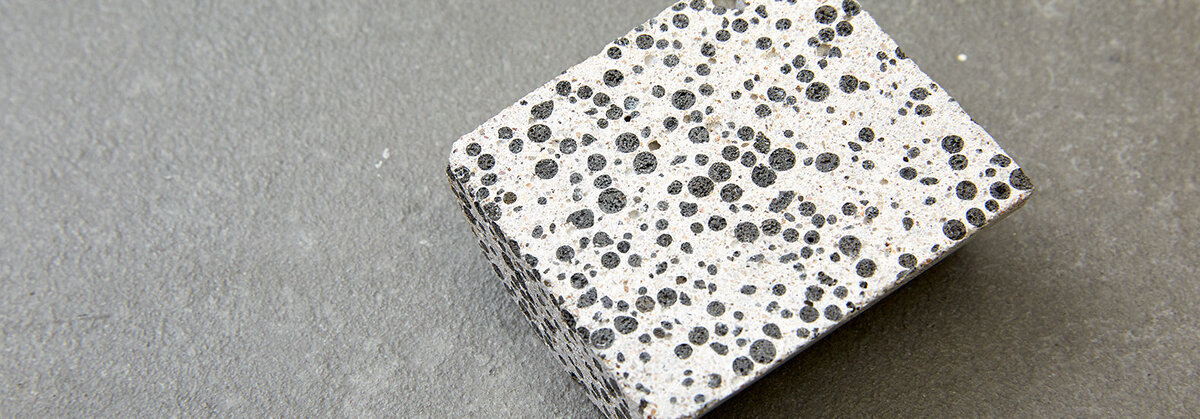
Self-healing concrete offers a promising solution for enhancing the resilience, durability, and sustainability of concrete structures in architecture and construction. While further research and development are needed to address technical challenges and optimize performance, self-healing concrete holds great potential for transforming the way infrastructure and buildings are designed, constructed, and maintained as smart materials in architecture.
3. Thermochromic Materials
Thermochromic materials are substances that change color in response to variations in temperature. This unique property makes them highly versatile and desirable for a wide range of applications, including smart materials in architecture. Here’s an overview of thermochromic materials and their significance in architecture:
- Composition: Thermochromic materials can be organic or inorganic compounds that undergo reversible color changes as a result of alterations in temperature. Organic thermochromic materials often consist of leuco dyes or liquid crystals embedded in a polymer matrix, while inorganic thermochromic materials include metal oxides or chalcogenide compounds.
- Color Change Mechanism: The color change in thermochromic materials is typically driven by alterations in molecular structure or crystal lattice arrangements in response to temperature variations. This can involve changes in absorption or reflection properties, resulting in perceivable shifts in color.
- Applications in Architecture:
- Smart Windows: Thermochromic materials are used in the fabrication of smart windows that dynamically adjust their transparency or shading properties based on temperature changes. In warmer conditions, the windows may darken to block excess sunlight and reduce solar heat gain, while in cooler conditions, they may become clearer to allow more natural light penetration.
- Facade Systems: Thermochromic materials can be incorporated into facade cladding systems to create visually dynamic building envelopes that respond to seasonal or daily temperature fluctuations. This not only enhances the aesthetic appeal of the building but also improves energy efficiency by optimizing daylighting and solar control.
- Interior Design Elements: Thermochromic materials are employed in interior design elements such as wall coverings, flooring, and furniture to introduce interactive and engaging features. For example, walls may change color in response to occupants’ body heat or room temperature, creating immersive and dynamic spatial experiences.
- Art Installations: Architects and artists utilize thermochromic materials in art installations and interactive sculptures to evoke emotional responses and stimulate sensory engagement. These installations may incorporate thermochromic paints, pigments, or coatings to create transformative visual effects triggered by environmental conditions or human interaction.
- Advantages:
- Energy Efficiency: Thermochromic materials contribute to energy-efficient building design by optimizing daylighting and solar heat gain, reducing reliance on artificial lighting and mechanical cooling systems.
- Aesthetic Versatility: Thermochromic materials offer architects and designers a wide range of color options and design possibilities, allowing for customizable and adaptable architectural expressions that respond dynamically to changing environmental conditions.
- User Engagement: Thermochromic elements enhance user experience and interaction within architectural spaces by creating visually stimulating and immersive environments that captivate attention and evoke curiosity.
- Challenges:
- Durability: Ensuring the long-term durability and stability of thermochromic materials, particularly in outdoor applications exposed to harsh environmental conditions, poses challenges related to material degradation, color fading, and performance consistency.
- Cost: The cost of thermochromic materials, especially advanced formulations with enhanced properties or specialized applications, may be higher compared to conventional building materials, impacting affordability and widespread adoption.
- Integration: Integrating thermochromic materials into architectural elements and building systems requires careful planning, coordination, and compatibility considerations to ensure seamless operation and functionality.

Thermochromic materials offer exciting opportunities for innovation and creativity in architectural design, enabling the creation of dynamic, responsive, and visually captivating built environments. As research and development efforts continue to advance, thermochromic materials are poised to play an increasingly significant role in shaping the future of architecture, fostering sustainability, comfort, and aesthetic excellence.
4. Electrochromic Glass
Electrochromic glass, also known as smart glass or switchable glass, is a dynamic glazing technology that allows the transparency or tint of glass to be electronically controlled in response to an applied voltage or electrical signal. This innovative material has gained popularity in architecture and building design due to its ability to enhance occupant comfort, energy efficiency, and aesthetic appeal. Here’s an overview of electrochromic glass and its significance in architecture:
- Composition and Operation:
- Electrochromic glass typically consists of multiple thin layers of conductive coatings, ion-conducting electrolytes, and electrochromic materials sandwiched between glass substrates.
- The electrochromic layer contains materials such as metal oxides (e.g., tungsten oxide) that undergo reversible color changes when ions are inserted or extracted through electrochemical reactions.
- Applying a low-voltage electrical current to the glass triggers the electrochromic effect, causing the glass to change from transparent to tinted or vice versa, depending on the polarity of the voltage.
- Applications in Architecture:
- Smart Windows: Electrochromic glass is used in the fabrication of smart windows that can dynamically adjust their tint or transparency to regulate daylighting, solar heat gain, and glare. This helps to optimize indoor thermal comfort and minimize the need for artificial lighting and HVAC systems.
- Facade Systems: Electrochromic glass can be integrated into facade systems to create responsive building envelopes that adapt to changing environmental conditions. By controlling the transparency of the glass, architects can enhance visual aesthetics, daylight harvesting, and privacy while reducing energy consumption.
- Interior Partitions: Electrochromic glass partitions are employed in interior spaces to create flexible and adaptable room configurations. By switching between transparent and opaque states, these partitions enable users to modify spatial layouts, control visual connectivity, and enhance acoustic privacy as needed.
- Skylights and Roof Glazing: Electrochromic glass is utilized in skylights and roof glazing systems to regulate natural light ingress and solar heat gain in interior spaces. By adjusting the tint of the glass based on daylight levels and solar angles, architects can mitigate glare and optimize thermal comfort throughout the day.
- Advantages:
- Energy Efficiency: Electrochromic glass reduces reliance on artificial lighting and HVAC systems by maximizing natural daylighting while minimizing solar heat gain and glare, resulting in energy savings and reduced carbon emissions.
- User Comfort: Electrochromic glass enhances occupant comfort by providing glare control, thermal insulation, and visual connectivity with the surrounding environment, thereby improving productivity, well-being, and satisfaction.
- Design Flexibility: Electrochromic glass offers architects and designers greater flexibility in creating dynamic and responsive architectural forms that adapt to user preferences, environmental conditions, and building performance requirements.
- Challenges:
- Cost: The initial cost of electrochromic glass may be higher compared to conventional glazing options, impacting project budgets and affordability.
- Durability: Ensuring the long-term durability and reliability of electrochromic glass systems, particularly in outdoor applications exposed to weathering and mechanical stresses, poses challenges related to material degradation, performance degradation, and maintenance requirements.
- Integration: Integrating electrochromic glass into building systems and controls requires coordination with electrical and automation systems, as well as compatibility with other building components and technologies.
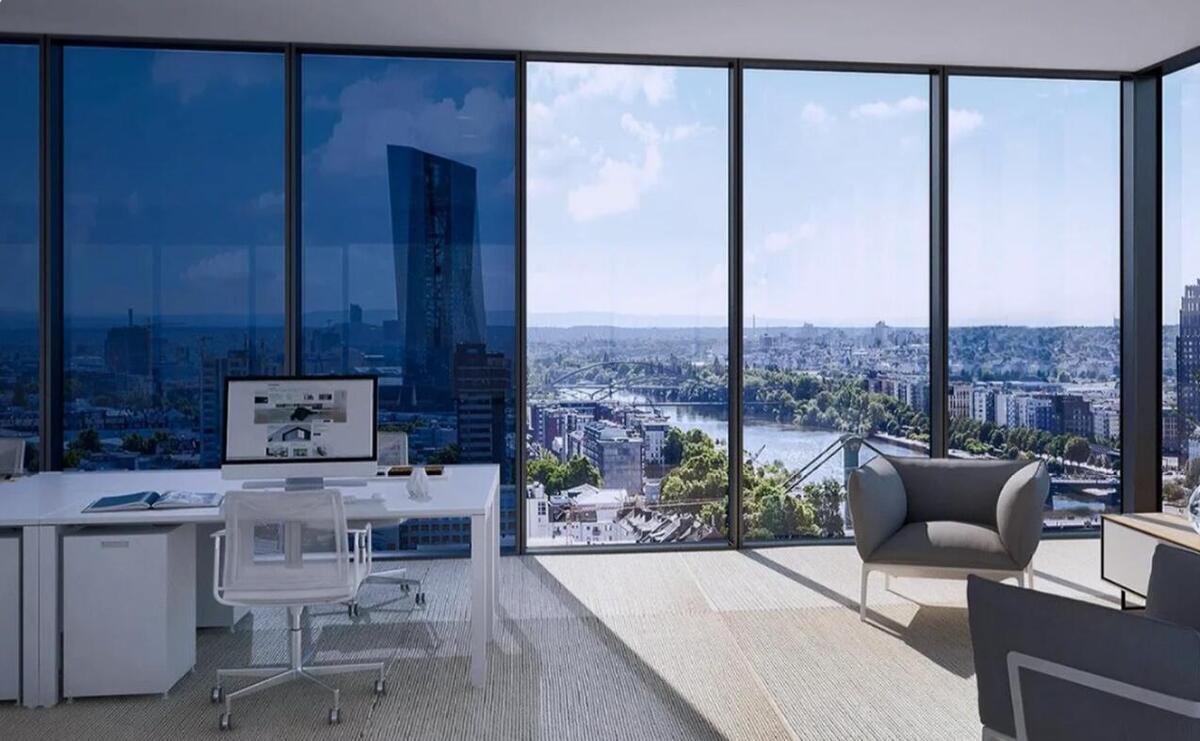
Electrochromic glass represents a transformative technology with significant potential to revolutionize architectural design and building performance. As research and development efforts continue to advance, electrochromic glass is expected to play an increasingly vital role in creating sustainable, comfortable, and visually dynamic built environments that meet the evolving needs of occupants, communities, and the planet as smart materials in architecture.
5. Photovoltaic Panels
Photovoltaic (PV) panels, also known as solar panels, are devices that convert sunlight directly into electricity using photovoltaic cells. These panels have become increasingly popular in architecture and construction due to their ability to harness renewable energy, reduce carbon emissions, and contribute to sustainable building practices as smart materials in architecture. Here’s an overview of photovoltaic panels and their significance in architecture:
- Composition and Operation:
- Photovoltaic panels consist of multiple solar cells made of semiconductor materials, typically crystalline silicon or thin-film materials such as amorphous silicon or cadmium telluride.
- When sunlight strikes the surface of a solar cell, photons in the sunlight excite electrons within the semiconductor material, generating an electric current through the photovoltaic effect.
- The electric current produced by individual solar cells is combined and collected by metal conductors to form a usable electrical output.
- Applications in Architecture:
- Roof-Mounted Systems: Photovoltaic panels are commonly installed on rooftops of buildings to generate electricity for on-site consumption or feed excess electricity back into the grid through net metering arrangements. Roof-mounted systems can be integrated into both new construction and existing buildings, providing a renewable energy source and reducing reliance on conventional grid power.
- Facade Integration: Building-integrated photovoltaic (BIPV) systems incorporate solar panels directly into building facades, windows, or shading elements, blending renewable energy generation with architectural design. BIPV systems offer opportunities for aesthetically pleasing and functional solar integration while maximizing energy production and building envelope performance.
- Solar Canopies and Awnings: Photovoltaic panels can be installed as overhead canopies or awnings in parking lots, outdoor spaces, or building entrances, providing shading, weather protection, and solar power generation simultaneously. Solar canopies contribute to sustainable urban design, reduce heat island effects, and enhance the usability of outdoor areas.
- Building-Integrated Solutions: Innovative architectural designs incorporate photovoltaic panels as integral components of building structures, such as roofs, walls, or sunshades. These integrated solutions offer seamless integration of renewable energy generation with building form and function, promoting energy efficiency, sustainability, and architectural innovation.
- Advantages:
- Renewable Energy Generation: Photovoltaic panels harness abundant sunlight to produce clean, renewable electricity, reducing reliance on fossil fuels and mitigating greenhouse gas emissions associated with conventional energy generation.
- Energy Independence: Photovoltaic panels provide building owners and occupants with greater energy independence and resilience by generating electricity on-site, reducing exposure to energy price volatility and supply disruptions.
- Environmental Benefits: Solar energy is a clean and sustainable resource that helps to mitigate air and water pollution, conserve natural resources, and combat climate change, contributing to a healthier and more sustainable built environment.
- Challenges:
- Initial Cost: While the cost of photovoltaic panels has declined significantly in recent years, the initial investment required for solar installation remains a barrier for some building owners and developers, particularly for large-scale or complex projects.
- Intermittency: Solar energy generation is dependent on sunlight availability and varies with factors such as time of day, season, weather conditions, and geographic location. Intermittent generation patterns may require additional energy storage or grid integration solutions to ensure reliable power supply.
- Aesthetic Considerations: Integrating photovoltaic panels into architectural designs may pose challenges related to visual aesthetics, historic preservation, and community acceptance. Balancing energy performance goals with design preferences and regulatory requirements is essential for successful solar integration.

Photovoltaic panels offer a sustainable and viable solution for generating clean electricity in architecture and construction, enabling buildings to reduce their environmental footprint, enhance energy resilience, and contribute to a more sustainable future as smart materials in architecture. As technology advances and market adoption continues to grow, photovoltaic panels are expected to play an increasingly significant role in shaping the built environment and transitioning towards a renewable energy future.
6. Aerogel Insulation
Aerogel insulation is an advanced material known for its exceptional thermal insulation properties, lightweight structure, and versatility in various applications. It has gained significant attention in architecture and construction for its ability to improve building energy efficiency, occupant comfort, and environmental sustainability as smart materials in architecture. Here’s an overview of aerogel insulation and its significance in architecture:
- Composition and Structure:
- Aerogel insulation is composed of a gel-like material with a highly porous and low-density structure, typically derived from silica, carbon, or other organic or inorganic compounds.
- The gel undergoes a process called supercritical drying, where the liquid component is removed under high-pressure conditions, leaving behind a solid aerogel with a nanoscale pore structure.
- The nanoporous structure of aerogel consists of interconnected networks of tiny air pockets, which effectively block heat transfer through conduction while allowing light transmission.
- Thermal Insulation Properties:
- Aerogel insulation exhibits exceptional thermal insulating properties, with low thermal conductivity values that significantly reduce heat transfer through building envelopes.
- Its high surface area-to-volume ratio and nanoscale pore structure minimize convective heat transfer and thermal bridging, making it highly effective in maintaining interior comfort and reducing heating and cooling loads.
- Aerogel insulation also offers superior performance in extreme temperature conditions, remaining effective in both hot and cold climates.
- Applications in Architecture:
- Building Envelope Insulation: Aerogel insulation is used in various components of building envelopes, including walls, roofs, floors, and windows, to enhance thermal insulation and energy efficiency. It helps to minimize heat loss in winter and heat gain in summer, reducing energy consumption for heating and cooling.
- Historic Building Preservation: Aerogel insulation is employed in the retrofitting and renovation of historic buildings to improve thermal performance without compromising architectural integrity or visual aesthetics. Its thin and lightweight profile allows for discreet integration into existing structures, preserving historical features and character.
- Cold Storage Facilities: Aerogel insulation is utilized in cold storage facilities, refrigerated warehouses, and food processing plants to maintain temperature control and prevent energy losses. Its superior insulating properties help to minimize refrigeration costs and ensure product quality and safety.
- Industrial Applications: Aerogel insulation finds applications in industrial settings, such as pipelines, tanks, and equipment insulation, to mitigate heat transfer and improve process efficiency. Its lightweight and flexible nature enables easy installation and customization for complex geometries.
- Advantages:
- High Thermal Performance: Aerogel insulation offers superior thermal resistance compared to traditional insulation materials, resulting in reduced energy consumption and operational costs.
- Space Efficiency: Aerogel insulation achieves high thermal resistance with minimal thickness, allowing for space-efficient insulation solutions in constrained building environments.
- Durability and Longevity: Aerogel insulation is resistant to moisture, mold, and degradation, providing long-lasting thermal insulation performance and requiring minimal maintenance over its lifespan.
- Environmental Sustainability: Aerogel insulation contributes to environmental sustainability by reducing greenhouse gas emissions associated with building energy use and improving building energy efficiency ratings.
- Challenges:
- Cost: The cost of aerogel insulation is relatively high compared to conventional insulation materials, which may present a barrier to widespread adoption, particularly for large-scale projects or budget-conscious clients.
- Fragility: Aerogel insulation can be fragile and prone to damage during handling and installation, requiring careful handling procedures and protective measures to prevent breakage.
- Moisture Management: While aerogel insulation is resistant to moisture absorption, proper moisture management strategies are essential to prevent condensation, mold growth, and degradation of adjacent building materials.
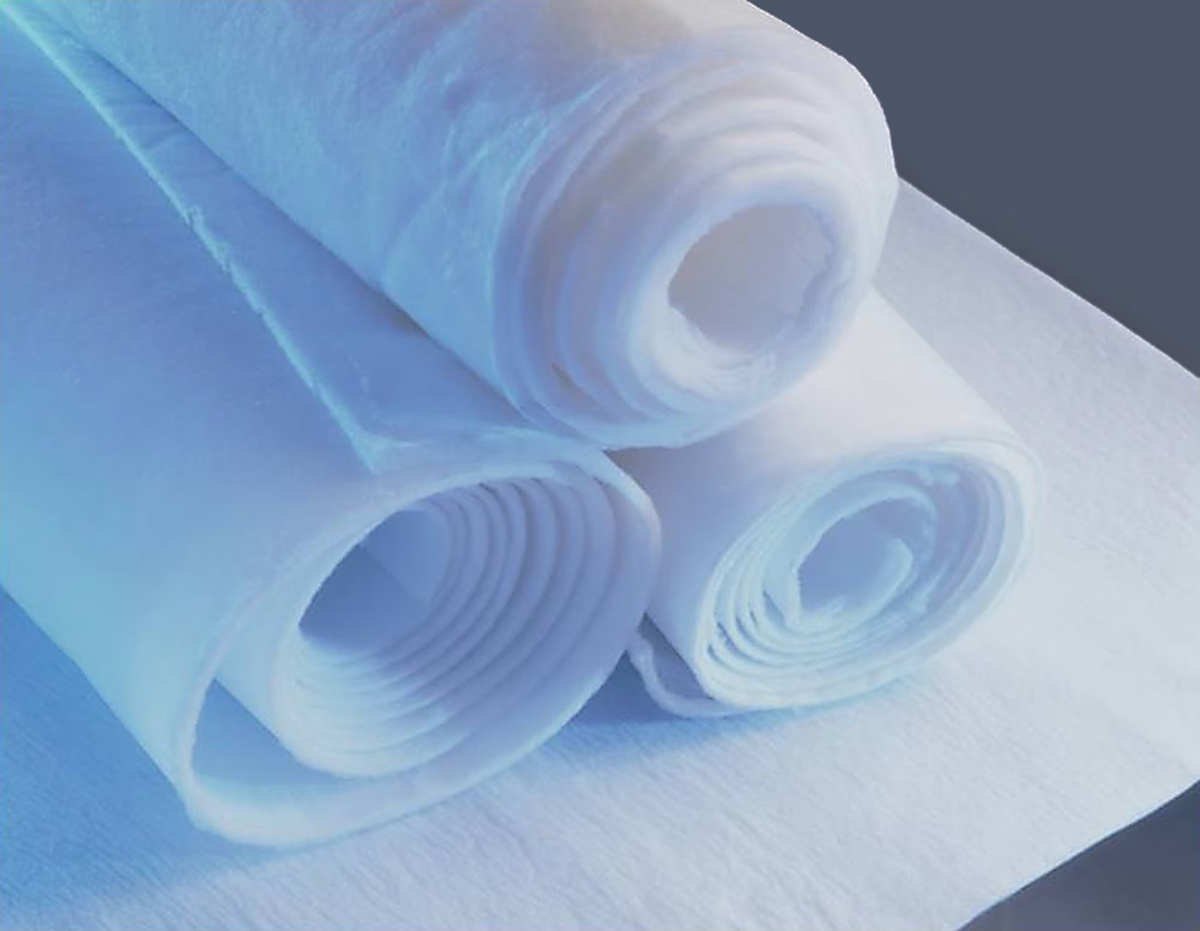
Aerogel insulation offers a promising solution for improving building energy efficiency, thermal comfort, and environmental sustainability in architecture and construction. As research and development efforts continue to advance, and manufacturing processes become more efficient, aerogel insulation is expected to play an increasingly significant role in shaping the future of sustainable building design and performance as smart materials in architecture.
7. Piezoelectric Materials
Piezoelectric materials are a class of materials that exhibit the piezoelectric effect, which refers to the generation of an electric charge in response to mechanical stress or deformation. Conversely, these materials can also undergo mechanical deformation when subjected to an electric field. This unique property makes piezoelectric materials highly valuable for a wide range of applications in various industries, including architecture and construction as smart materials in architecture. Here’s an overview of piezoelectric materials and their significance in architecture:
- Composition and Structure:
- Piezoelectric materials can be organic or inorganic compounds, including ceramics, crystals, polymers, and composites.
- In crystalline materials such as quartz, Rochelle salt, and lead zirconate titanate (PZT), the piezoelectric effect arises from the asymmetric arrangement of atoms or ions within the crystal lattice, resulting in an electric dipole moment that can be induced or reversed by mechanical stress or electrical polarization.
- Polycrystalline ceramics and piezoelectric polymers exhibit piezoelectric behavior due to the alignment of polar molecules or crystallites under applied stress.
- Applications in Architecture:
- Energy Harvesting: Piezoelectric materials are utilized to harvest mechanical energy from vibrations, foot traffic, or structural movements within buildings and convert it into electrical energy. Piezoelectric floor tiles, paving slabs, or structural elements can generate power to supplement building energy needs or charge batteries for electronic devices.
- Structural Health Monitoring: Piezoelectric sensors and actuators embedded in building structures enable real-time monitoring of structural integrity, performance, and safety. These sensors detect changes in mechanical strain, vibration, or deformation, providing early warning alerts for potential damage, fatigue, or failure.
- Vibration Damping: Piezoelectric materials can be integrated into building components such as floors, walls, and ceilings to dampen vibrations caused by external sources such as wind, traffic, or machinery. By converting mechanical energy into electrical energy, piezoelectric dampers help to mitigate structural resonance and minimize noise transmission.
- Active Structural Control: Piezoelectric actuators and control systems are employed in adaptive building structures to actively adjust stiffness, damping, or dynamic response characteristics in real time. These systems optimize building performance under changing environmental conditions, seismic events, or occupant activities, enhancing comfort, safety, and energy efficiency.
- Advantages:
- Efficiency: Piezoelectric materials offer high energy conversion efficiency and rapid response times, making them suitable for dynamic energy harvesting and structural control applications.
- Sensitivity: Piezoelectric sensors exhibit high sensitivity and accuracy in detecting mechanical signals, enabling precise monitoring and diagnostics of building structures.
- Versatility: Piezoelectric materials can be integrated into various architectural elements and building systems, providing customizable solutions for energy harvesting, sensing, and actuation requirements.
- Durability: Piezoelectric materials are robust and durable, capable of withstanding harsh environmental conditions, temperature variations, and mechanical loads over extended periods.
- Challenges:
- Cost: The cost of piezoelectric materials, especially high-performance ceramics and crystals, may be relatively high compared to conventional construction materials, impacting project feasibility and cost-effectiveness as smart materials in architecture.
- Integration Complexity: Integrating piezoelectric materials into building structures and systems requires careful design, fabrication, and installation procedures to ensure compatibility, performance optimization, and long-term reliability.
- Scaling Issues: Scaling up piezoelectric energy harvesting systems for large-scale deployment in buildings or urban infrastructure may pose challenges related to cost, efficiency, and logistics.
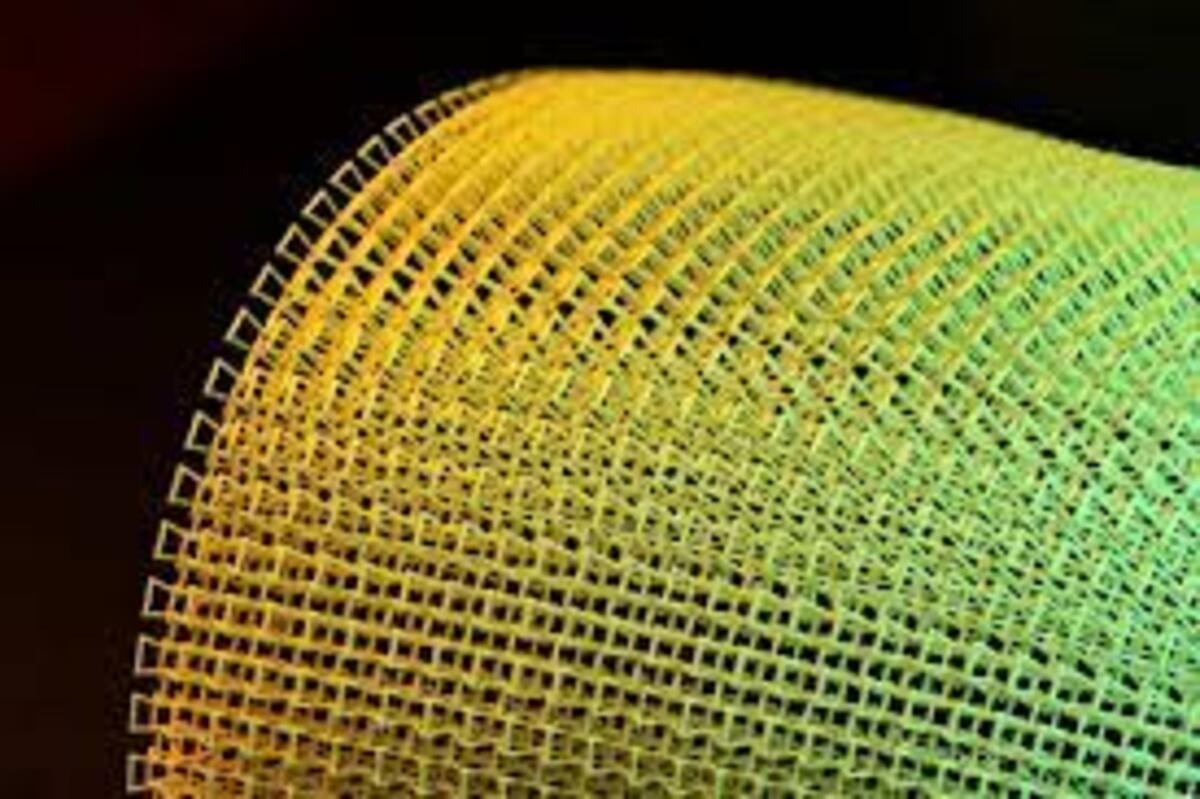
Piezoelectric materials offer innovative solutions for enhancing the performance, sustainability, and resilience of buildings and infrastructure in architecture and construction. As research advances and technology matures, piezoelectric materials are expected to play an increasingly significant role in shaping the future of smart and adaptive built environments, offering sustainable solutions for energy harvesting, structural monitoring, and active control as smart materials in architecture.
Conclusion
The integration of smart materials in architecture holds immense potential to revolutionize the built environment, addressing key challenges and driving sustainable, functional, and resilient solutions. These materials offer a myriad of benefits across multiple dimensions, from enhancing energy efficiency and occupant comfort to enabling innovative design expressions and structural integrity.
By harnessing the capabilities of smart materials such as shape memory alloys, self-healing concrete, thermochromic materials, electrochromic glass, photovoltaic panels, aerogel insulation, and piezoelectric materials, architects and designers can create buildings and infrastructure that respond intelligently to their surroundings, adapt to changing conditions, and prioritize the well-being of occupants and the environment.
The adoption of smart materials in architecture represents a paradigm shift towards a more sustainable and technologically advanced built environment. Through ongoing research, innovation, and collaboration across disciplines, the potential of smart materials continues to expand, offering new possibilities for addressing pressing challenges such as climate change, urbanization, and resource scarcity.
As the field of smart materials in architecture evolves, it is crucial to consider not only the technical performance and economic viability of these materials but also their societal impacts, including accessibility, equity, and cultural relevance. By embracing the transformative potential of smart materials, architects, engineers, and policymakers can collectively shape a future built environment that is smarter, greener, and more resilient for generations to come.
Suggested article for reading:
Smart Warehouse in Construction; Guide to 2024
Smart Windows For Smart Buildings; Comprehensive Guide 2024
Resources:
IEA | MarketsandMarkets | Science Direct | Mide Technology | XeelTech | IOPscience | Smart Materials 3D
For all the pictures: Freepik | AZoCleanTech | TU Delft | OliKrom | Smart Glass | Wright-Patterson AFB | Physics World

